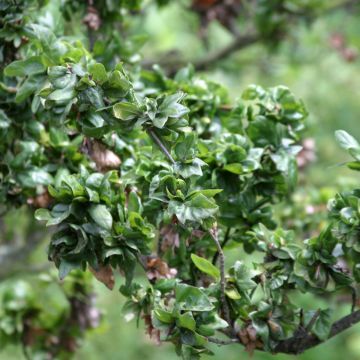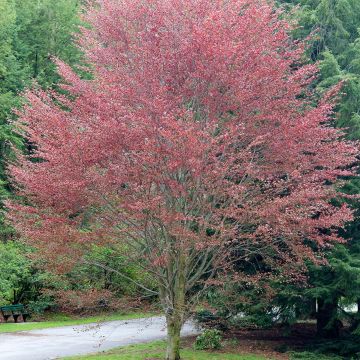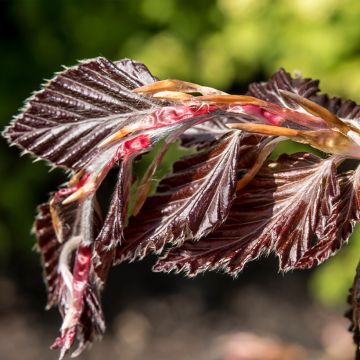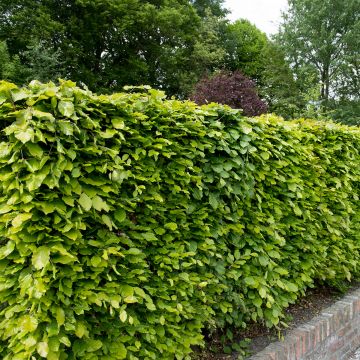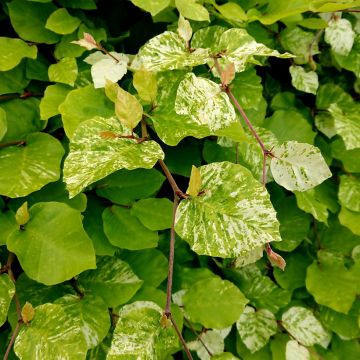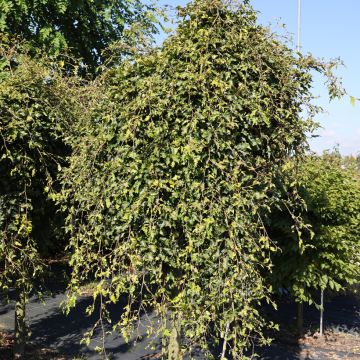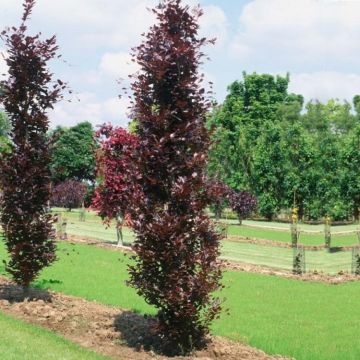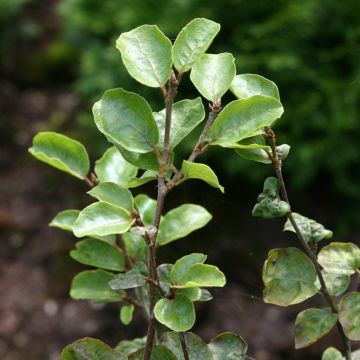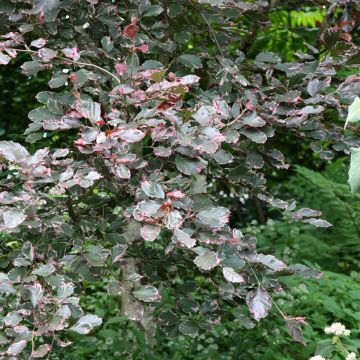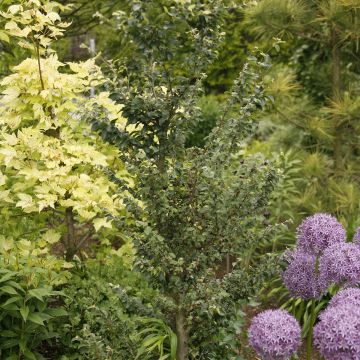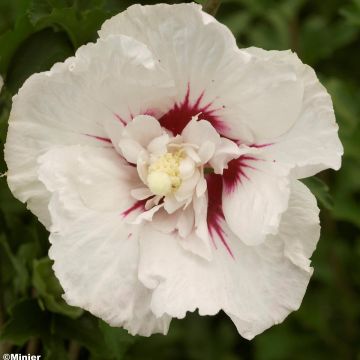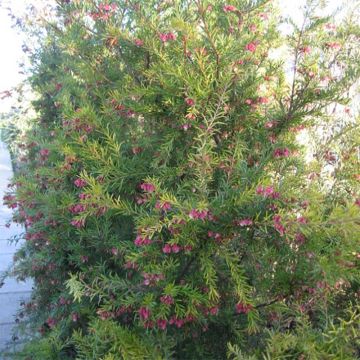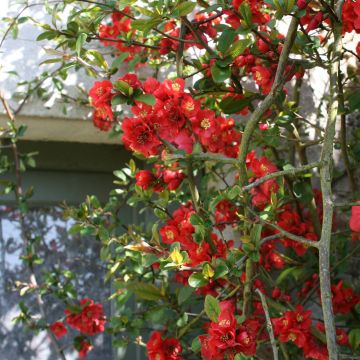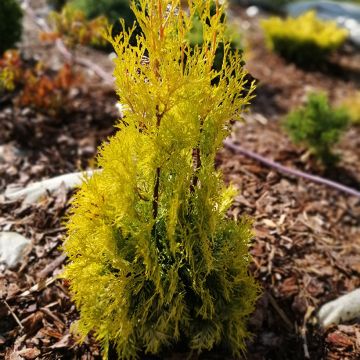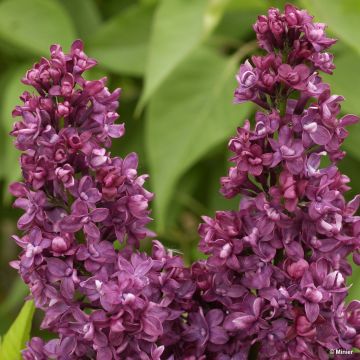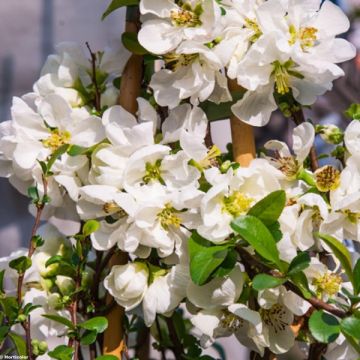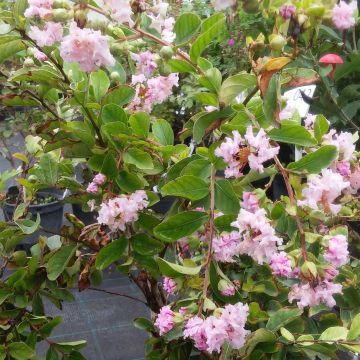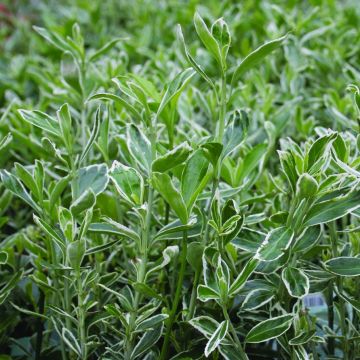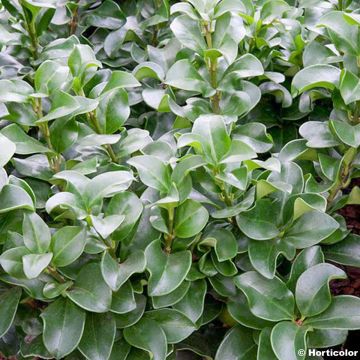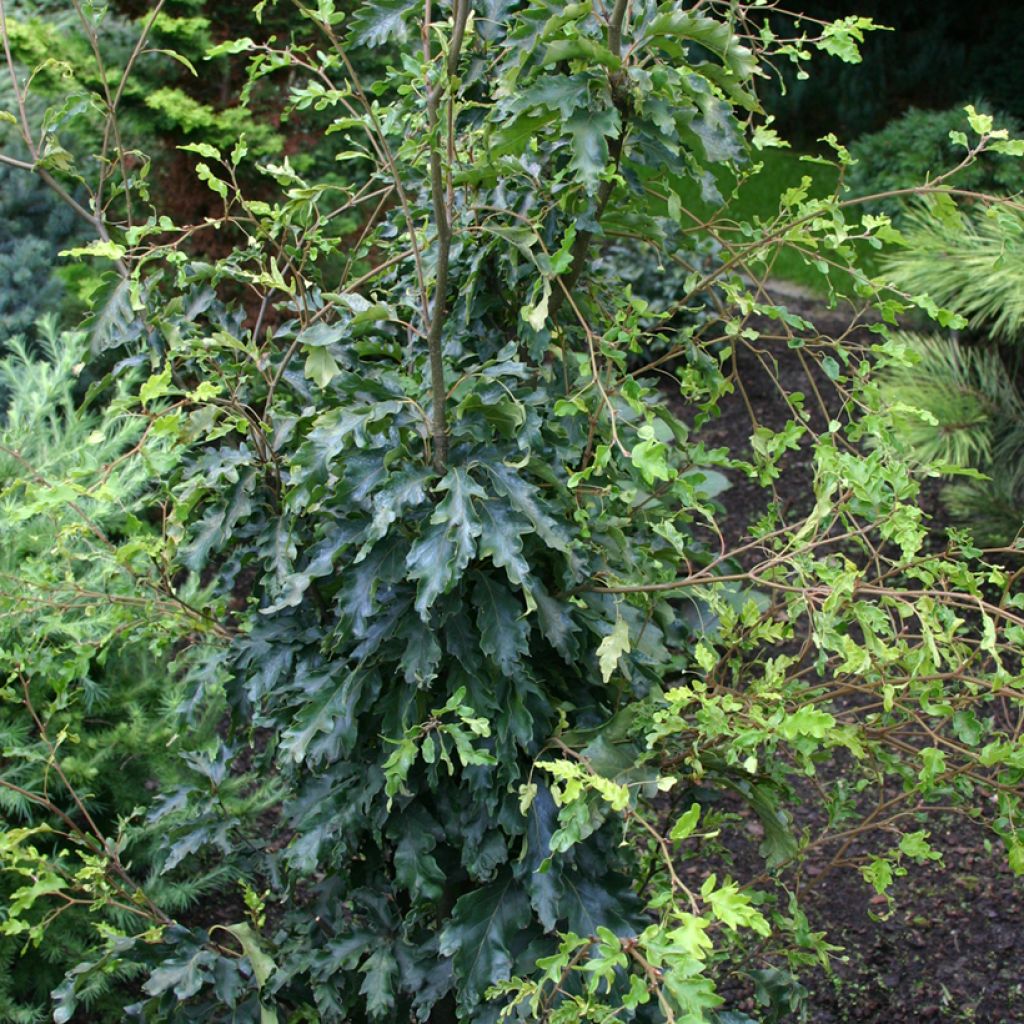

Fagus sylvatica Interrupta
Fagus sylvatica Interrupta
Fagus sylvatica Interrupta
European Beech, Common Beech
This item cannot be shipped to the selected country
Delivery charge from €5.90
More information
Schedule delivery date,
and select date in basket
This plant carries a 24 months recovery warranty
More information
We guarantee the quality of our plants for a full growing cycle, and will replace at our expense any plant that fails to recover under normal climatic and planting conditions.
From €5.90 for pickup delivery and €6.90 for home delivery
Express home delivery from €8.90.
Does this plant fit my garden?
Set up your Plantfit profile →
Description
Fagus sylvatica 'Interrupta' is a form of Common Beech with very unique green leaves, often very deformed, with a more or less divided leaf. Lobed and irregularly "broken," many leaves have a lobed leaf section followed by a section consisting only of the central vein of the leaf, and then another lobed leaf section. This medium-sized, compact tree develops a rounded, closed, and dense crown. This very rare variety should be highlighted as a standalone specimen. It requires a soil rich in humus.
The beech, in Latin Fagus sylvatica, is an imposing tree with a spreading habit. Its cylindrical trunk is covered with smooth, light grey bark. This tree can live for several centuries. Native to central Europe to the Caucasus, it is one of the most common species in European forests. Its reddish wood is used in cabinetmaking and for the production of wooden tools and toys as well as firewood. It is very hardy and can reach a height of 20 m at maturity.
'Interrupta' comes from the cultivar 'Rohanii'. It was created at the Trompenburg Arboretum in Rotterdam, the Netherlands. This species is compact, has slow growth, and a rounded crown. It reaches a height of 10 to 12 m at maturity. Its leaves are irregularly cut and deformed. They measure 4 to 7 cm in length. The flowers appear almost at the same time as the leaves. From April to May, barely visible, cream-coloured monoecious flowers appear. The male flowers are grouped in pendulous catkins of 40 to 60 mm. The female flowers are grouped in 2 to 4 at the end of the branches. Mature specimens produce fruits called beech nuts, which are shiny brown and covered with bristly prickles. These 12 to 18 mm long fruits are edible in small quantities. Mountain dwellers used to use them to make flour.
Fagus sylvatica 'Interrupta' is a very hardy, low-maintenance tree. It likes partial shade and non-scorching sun and prefers cool and temperate climates. The soil should be moist and well-drained and always have a constant moisture level as it does not tolerate drought. Planted as a standalone specimen, it has an elegant presence and is regularly observed to admire its always surprising leaves. It is suitable for medium to large gardens.
Report an error about the product description
Plant habit
Flowering
Foliage
Botanical data
Fagus
sylvatica
Interrupta
Fagaceae
European Beech, Common Beech
Cultivar or hybrid
Other Fagus - Beech
Planting and care
Fagus sylvatica Interrupta enjoys partial shade and non-scorching sunlight. It thrives in cool and temperate climates. The soil should be moist and well-drained, rich in humus, and always maintain a constant level of humidity as it does not tolerate drought. Plant it with a root ball to give it the best chance of living a long life. In February-March, when the tree is dormant, remove any branches that compromise symmetry or are tangled, to maintain a good habit. Be aware of aphids and scale insects, as well as mildew.
Planting period
Intended location
Care
This item has not been reviewed yet - be the first to leave a review about it.
Hedge shrubs
Haven't found what you were looking for?
Hardiness is the lowest winter temperature a plant can endure without suffering serious damage or even dying. However, hardiness is affected by location (a sheltered area, such as a patio), protection (winter cover) and soil type (hardiness is improved by well-drained soil).

Photo Sharing Terms & Conditions
In order to encourage gardeners to interact and share their experiences, Promesse de fleurs offers various media enabling content to be uploaded onto its Site - in particular via the ‘Photo sharing’ module.
The User agrees to refrain from:
- Posting any content that is illegal, prejudicial, insulting, racist, inciteful to hatred, revisionist, contrary to public decency, that infringes on privacy or on the privacy rights of third parties, in particular the publicity rights of persons and goods, intellectual property rights, or the right to privacy.
- Submitting content on behalf of a third party;
- Impersonate the identity of a third party and/or publish any personal information about a third party;
In general, the User undertakes to refrain from any unethical behaviour.
All Content (in particular text, comments, files, images, photos, videos, creative works, etc.), which may be subject to property or intellectual property rights, image or other private rights, shall remain the property of the User, subject to the limited rights granted by the terms of the licence granted by Promesse de fleurs as stated below. Users are at liberty to publish or not to publish such Content on the Site, notably via the ‘Photo Sharing’ facility, and accept that this Content shall be made public and freely accessible, notably on the Internet.
Users further acknowledge, undertake to have ,and guarantee that they hold all necessary rights and permissions to publish such material on the Site, in particular with regard to the legislation in force pertaining to any privacy, property, intellectual property, image, or contractual rights, or rights of any other nature. By publishing such Content on the Site, Users acknowledge accepting full liability as publishers of the Content within the meaning of the law, and grant Promesse de fleurs, free of charge, an inclusive, worldwide licence for the said Content for the entire duration of its publication, including all reproduction, representation, up/downloading, displaying, performing, transmission, and storage rights.
Users also grant permission for their name to be linked to the Content and accept that this link may not always be made available.
By engaging in posting material, Users consent to their Content becoming automatically accessible on the Internet, in particular on other sites and/or blogs and/or web pages of the Promesse de fleurs site, including in particular social pages and the Promesse de fleurs catalogue.
Users may secure the removal of entrusted content free of charge by issuing a simple request via our contact form.
The flowering period indicated on our website applies to countries and regions located in USDA zone 8 (France, the United Kingdom, Ireland, the Netherlands, etc.)
It will vary according to where you live:
- In zones 9 to 10 (Italy, Spain, Greece, etc.), flowering will occur about 2 to 4 weeks earlier.
- In zones 6 to 7 (Germany, Poland, Slovenia, and lower mountainous regions), flowering will be delayed by 2 to 3 weeks.
- In zone 5 (Central Europe, Scandinavia), blooming will be delayed by 3 to 5 weeks.
In temperate climates, pruning of spring-flowering shrubs (forsythia, spireas, etc.) should be done just after flowering.
Pruning of summer-flowering shrubs (Indian Lilac, Perovskia, etc.) can be done in winter or spring.
In cold regions as well as with frost-sensitive plants, avoid pruning too early when severe frosts may still occur.
The planting period indicated on our website applies to countries and regions located in USDA zone 8 (France, United Kingdom, Ireland, Netherlands).
It will vary according to where you live:
- In Mediterranean zones (Marseille, Madrid, Milan, etc.), autumn and winter are the best planting periods.
- In continental zones (Strasbourg, Munich, Vienna, etc.), delay planting by 2 to 3 weeks in spring and bring it forward by 2 to 4 weeks in autumn.
- In mountainous regions (the Alps, Pyrenees, Carpathians, etc.), it is best to plant in late spring (May-June) or late summer (August-September).
The harvesting period indicated on our website applies to countries and regions in USDA zone 8 (France, England, Ireland, the Netherlands).
In colder areas (Scandinavia, Poland, Austria...) fruit and vegetable harvests are likely to be delayed by 3-4 weeks.
In warmer areas (Italy, Spain, Greece, etc.), harvesting will probably take place earlier, depending on weather conditions.
The sowing periods indicated on our website apply to countries and regions within USDA Zone 8 (France, UK, Ireland, Netherlands).
In colder areas (Scandinavia, Poland, Austria...), delay any outdoor sowing by 3-4 weeks, or sow under glass.
In warmer climes (Italy, Spain, Greece, etc.), bring outdoor sowing forward by a few weeks.

































